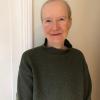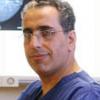A study of over 50,000 women participating in the UK NHS Breast Screening Programme has found that, while three-yearly screening intervals are appropriate for the majority of women, approximately one third of women are at higher risk of developing cancer and might benefit from more frequent mammograms.
The study was presented at the 9th European Breast Cancer Conference (EBCC-9). A team of researchers from Manchester University and Queen Mary University of London set out to establish if it is feasible for healthcare professionals to target screening and preventive measures better by identifying the degree of risk of developing breast cancer in individual women. They collected extra information from women attending routine breast screening in Manchester and who had agreed to participate in the Predicting Risk Of breast Cancer At Screening (PROCAS) study.
A questionnaire was used to collect information on important breast cancer risk factors such as family history and lifestyle. Where it was appropriate, genetic information was collected by analysing saliva samples. Breast density was measured from the mammogram and given a “visual assessment score” (VAS), which indicated the percentage of dense tissue in the breast. The study started in 2009 and the first 53,467 women were included in the analysis reported at EBCC-9. During this time 634 women developed breast cancer.
The NHS Breast Screening Programme is open to women between the ages of 47 and 73, and the “normal” risk of developing breast cancer within the next ten years varies from 2.4% at the age of 47 to 3.5% at the age of 70.
The risk factor questionnaire indicated that 676 (1.4%) women had a high risk of developing breast cancer of eight per cent or more over the next ten years, with a further 4591 (8.6%) women having a moderately increased risk of between five and eight percent.
The VAS showed that 60% or more of breast tissue was dense in 5.2% of the women. This is relevant as breast tissue thins as women age and a high percentage of dense breast tissue at older ages is a risk factor for developing cancer. The researchers found that women with the highest, age adjusted per centage of dense tissue were 2.9-fold more likely to develop breast cancer in the next ten years than women with the lowest density.
When the results from the risk factor questionnaire and VAS were combined to make the results more accurate at defining the women’s risks, they found that 1,280 (two percent) of women had a high risk (eight per cent or more) of developing breast cancer with 29 (2.3%) developing breast cancer. There were 14,720 women with an above average risk (over 3.5%) of developing breast cancer in the next ten years and, indeed, 267 (1.8%) had developed breast cancer in the four-year period from 2009. This left 36,748 women with average or below average risk of developing breast cancer, and, of these, only 371 (1%) developed breast cancer. When looking specifically at the 3,432 women in this group who had a low (less than one percent) ten-year risk, only ten (0.3%) developing breast cancer during the four years.
The researchers also found that among the 36,748 women at average or below average risk, only 45 cancers that had started to spread to the lymph nodes were found during the four years, which was equivalent to about three per 100,000 women a year, compared to around 11 per 100,000 women a year in those at above average risk. Proportions of cancers that were further advanced were higher in the above average risk women: 32% compared to only 19% in women at average or below average risk.
Professor Gareth Evans, who is the chief investigator for the PROCAS study, said: “Our results suggest that three-yearly screening is very effective for around 70% of the female population, but that those women who have a higher than average risk of developing breast cancer probably require more frequent screening, particularly as more advanced cancers were detected in these women. Screening should be annual for the small proportion of women who have an eight percent or greater risk of developing cancer over the next ten years.
“This is the largest study of its kind in the UK, and the results could have an impact on the whole NHS Breast Screening Programme. By incorporating this process of personal risk assessment into routine screening practice we can predict and prevent more breast cancers in the future.”
The PROCAS study is being run from the University Hospital of South Manchester NHS Foundation Trust and it has received funding from the National Institute for Health Research’s Programme Grants for Applied Research (NIHR PGfAR) Programme.








